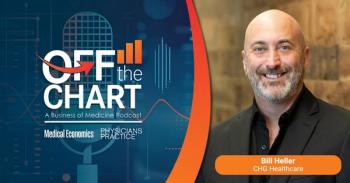
- Medical Economics September 2023
- Volume 100
- Issue 9
Independent practice is the secret to surviving and thriving in primary care
Staying independent allows doctors to improve on what they do best by enabling them to be nimble and innovative while focusing on satisfaction of patients and staff.
Listen to an audio version of this article:
There has never been a more challenging time to practice primary care: long hours, more metrics, increasingly sicker patients and low financial incentive compared to other specialties. Nonetheless,
Nimbleness
The health care environment is constantly changing – and independent practice allows providers to adjust quickly. When COVID-19 limited in person visits, independent practices could pivot to telehealth without needing multiple committee approvals and complex workflows. When payor and Medicare incentive programs change, we can modify our approach quickly to focus on the new metrics.While we may not have as much input directly with Medicare into these changes as large corporate practices do, our advantage is the ability to adjust quickly and start initiatives early to meet annual patient goals. We continue to be early adopters of trial platforms to make health care better. For instance, I was part of an early effort in Pennsylvania to transform primary care using the Patient Centered Medical Home (PCMH) model. I watched independent practices become some of the earliest to achieve NCQA PCMH certification in the state, resulting in additional revenue for these practices from participating payors.
Innovation
One study published in
Satisfaction
When Meaningful Use was introduced and Accountable Care Organizations were first being explored, the concept of the Triple Aim was gaining momentum. Most considered the components of Triple Aim to be patient care, cost, and outcomes. Today, most experts have shifted to the Quadruple Aim which also includes physician satisfaction. In the privately owned primary care practice, ensuring that physicians and staff are satisfied is key to success. Physicians feel valued when their input and contributions are recognized. In an era marked by heightened burnout in the health care industry, it’s crucial to prioritize the satisfaction of physicians. Working in an independent practice can have a team-like feel where everyone can provide input on leadership decisions. Having worked as both an independent and employed physician, I found it much more difficult to have this sense of belonging and control over the direction of the employer organization compared to private practice.
Today, providers of all types are facing new and increasing pressures and many would say that primary care physicians are experiencing a greater share than their peers. Independent practice provides primary care physicians with advantages that are essential to surviving and thriving in this today’s healthcare environment.
Auren Weinberg, MD, MBA, is Chief Medical Officer of
Articles in this issue
over 2 years ago
Remote teams: Are they right for you and your practice?over 2 years ago
6 steps to improve your practice financesover 2 years ago
The negative outlook on REITs is overblownNewsletter
Stay informed and empowered with Medical Economics enewsletter, delivering expert insights, financial strategies, practice management tips and technology trends — tailored for today’s physicians.








